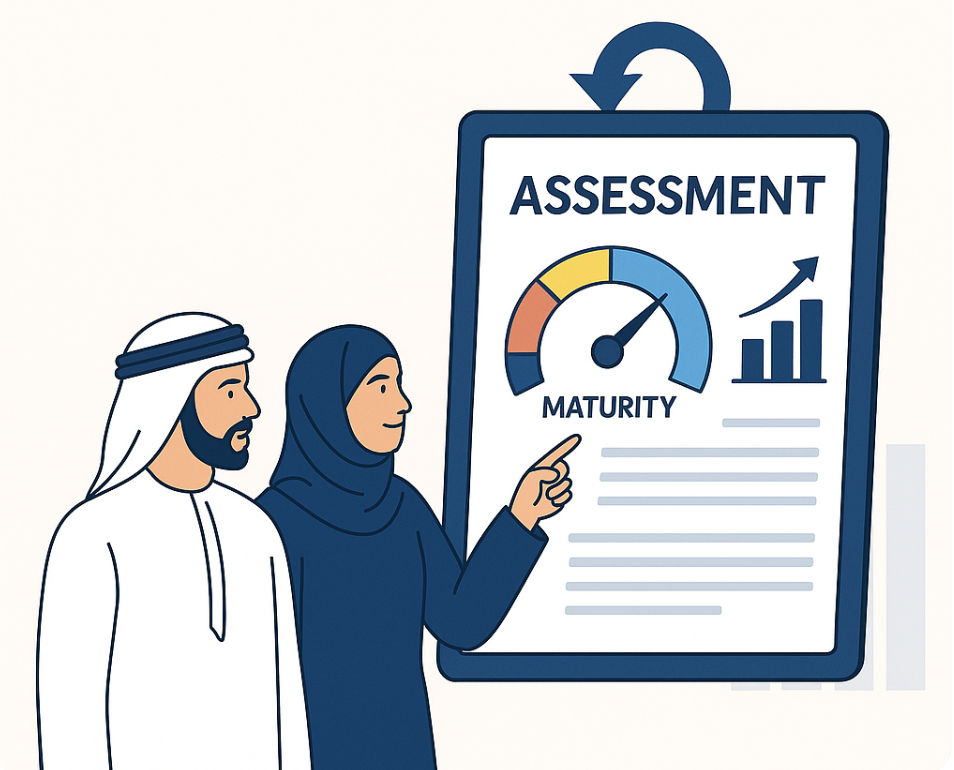TL;DR: The Nexus framework provides a structured approach to scaling Scrum, promoting collaboration, transparency, and empiricism among multiple teams. Compared to frameworks like Scaled Agile Framework (SAFe) and Large-Scale Scrum (LeSS), Nexus prioritises simplicity, flexibility, and alignment with core Scrum principles. While specific examples of Nexus implementation may not be as prevalent, companies like Royal Philips, Ericsson, Unity Technologies, and Schneider Electric have successfully adopted Nexus to scale agile practices and delivery efficiency across their distributed teams..
The Nexus framework, developed by Scrum.org, enables organisations to scale Scrum effectively, fostering collaboration, transparency, and empiricism among multiple teams. It provides a structured approach to coordinate the work of various Scrum teams without introducing unnecessary complexity.
At its core, Nexus builds upon the Scrum framework, leveraging small, cross-functional teams working in short iterations called sprints. The Nexus Integration Team (NIT) ensures the integration of individual teams' work into cohesive product increments, while events like Nexus Sprint Planning and Nexus Daily Scrum facilitate synchronisation and coordination.
Compared to frameworks like Scaled Agile Framework (SAFe) and Large-Scale Scrum (LeSS), Nexus stands out for its simplicity and adherence to Scrum principles. While SAFe introduces additional layers of hierarchy and LeSS focuses on descaling the organisation, Nexus provides a lightweight and flexible approach to scaling agile.
In summary, Nexus offers a viable solution for organisations looking to scale agile practices effectively while maintaining agility and responsiveness. Its emphasis on simplicity, flexibility, and alignment with Scrum principles makes it a compelling choice for companies seeking to achieve agility at scale. For more information on how Nexus could help your organisation achieve agility at scale, book a free appointment here.
If you want to dive deeper into this topic, read on…
The Nexus framework, developed by Scrum.org, is designed to help organisations scale Scrum effectively, enabling multiple Scrum teams to work together seamlessly on larger projects. With its focus on collaboration, transparency, and empiricism, Nexus provides a structured approach to scaling Scrum without introducing unnecessary complexity.
At the core of the Nexus framework is the Scrum framework itself, which consists of small, cross-functional teams working in short iterations called sprints to deliver increments of valuable product. However, as projects grow larger and more complex, coordinating multiple Scrum teams can become challenging. This is where Nexus comes in, offering a set of guidelines, events, and artefacts to facilitate collaboration and alignment among multiple teams.
One of the key concepts in the Nexus framework is the Nexus Integration Team (NIT). The NIT is responsible for ensuring that the work of individual Scrum teams is integrated and delivered as a cohesive product increment at the end of each sprint. This team consists of representatives from each Scrum team and serves as a central point of coordination, communication, and problem-solving.
The Nexus framework introduces several new events to help synchronise the work of multiple teams. The Nexus Sprint Planning event, for example, brings together representatives from all the Scrum teams to plan the work for the upcoming sprint and identify any dependencies or risks that need to be addressed. Similarly, the Nexus Daily Scrum event allows members of different teams to coordinate their activities and identify any impediments that may be preventing progress.
In addition to events, the Nexus framework also introduces new artefacts to support scaled Scrum practices. The Nexus Sprint Backlog, for example, provides a single, consolidated view of all the work being done by the different Scrum teams during a sprint. This helps ensure that teams are aligned and working towards a common goal. Similarly, the Nexus Sprint Goal provides a clear objective for the sprint that all teams can work towards, helping to maintain focus and alignment.
One of the key principles of the Nexus framework is transparency. By making all aspects of the project visible to everyone involved, Nexus promotes open communication and collaboration among teams. This transparency is achieved through the use of shared artefacts such as the Nexus Sprint Backlog and the Nexus Sprint Goal, as well as regular events such as the Nexus Sprint Review and the Nexus Sprint Retrospective.
Another important principle of the Nexus framework is empiricism. Nexus encourages teams to inspect and adapt their processes continuously based on feedback and data. This means that teams are encouraged to experiment with new practices and techniques to improve their effectiveness and efficiency. By embracing empiricism, Nexus helps teams to continuously improve and deliver greater value to their customers.
One of the strengths of the Nexus framework is its flexibility. While it provides a set of guidelines and practices for scaling Scrum, it is not prescriptive. Instead, it encourages teams to adapt the framework to suit their specific context and needs. This flexibility allows organisations to scale Scrum in a way that works best for them, rather than trying to fit into a one-size-fits-all approach.
Nexus Vs SAFe and LeSS
Comparing the Nexus framework to other scaling frameworks like Scaled Agile Framework (SAFe) and Large-Scale Scrum (LeSS) provides valuable insights into their respective strengths and approaches to scaling agile practices.
Starting with LeSS, it shares some similarities with Nexus in terms of its emphasis on simplicity and adherence to core Scrum principles. LeSS promotes the idea of scaling agile by descaling the organisation, focusing on fewer roles, artefacts, and events (ceremonies in LeSS) to reduce complexity. Similarly, Nexus also prioritises simplicity, advocating for minimal additional roles and events beyond those already defined in the Scrum framework.
One key difference between Nexus and LeSS lies in their approach to scaling. While Nexus provides a lightweight framework specifically designed for multiple Scrum teams working together, LeSS takes a broader organisational view, seeking to apply Scrum principles at the enterprise level. LeSS emphasises the importance of organisational design and structure in enabling agility, whereas Nexus focuses more narrowly on the coordination and alignment of multiple Scrum teams.
SAFe, on the other hand, takes a more prescriptive and structured approach to scaling agile practices. Unlike Nexus and LeSS, which are based on Scrum principles, SAFe incorporates elements of Lean, DevOps, and system thinking to provide a comprehensive framework for scaling agile across large enterprises. SAFe introduces additional layers of hierarchy and coordination, such as Agile Release Trains (ARTs) and Solution Trains, to facilitate alignment and synchronisation at scale.
One of the strengths of SAFe is its ability to provide a clear, structured framework for organisations transitioning to agile at scale. It offers detailed guidance on roles, responsibilities, and processes, making it easier for organisations to adopt agile practices across multiple teams and departments. However, this prescriptive approach can also be seen as a drawback, as it may introduce unnecessary complexity and rigidity, especially for organisations that value flexibility and autonomy. However, Agility Arabia advises caution when it comes to rolling out SAFe: you can read more about our stance on SAFe here.
In contrast, Nexus and LeSS offer more lightweight and flexible approaches to scaling agile. By focusing on the core principles of Scrum and minimising additional roles and events, these frameworks provide a simpler and more adaptable solution for organisations looking to scale agile practices. They prioritise transparency, collaboration, and empiricism, allowing teams to continuously inspect and adapt their processes to meet the needs of their customers and stakeholders.
While specific examples of organisations using the Nexus framework may not be as widely documented as those using more established scaling frameworks like SAFe, there are still instances of companies adopting Nexus to scale their agile practices. Here are a few examples:
1. Scrum.org: As the organisation behind the development of the Nexus framework, Scrum.org itself is a prime example of an entity leveraging Nexus. Scrum.org has applied Nexus principles and practices to its own internal operations to scale its development efforts and coordinate multiple teams working on various products and projects.
2. Royal Philips: Philips, a multinational conglomerate known for its healthcare, consumer lifestyle, and lighting products, adopted Nexus to scale agile practices across its various business units. By implementing Nexus, Philips aimed to improve collaboration and alignment among its distributed teams, enabling them to deliver value more efficiently and effectively.
3. Ericsson: Ericsson, a global leader in telecommunications technology and services, has also embraced Nexus to scale its agile practices. By leveraging Nexus, Ericsson aimed to enhance coordination and integration among its development teams, particularly in the context of large-scale product development efforts spanning multiple locations and time zones.
4. Unity Technologies: Unity Technologies, the creator of the popular Unity game engine, has used Nexus to scale its agile practices and facilitate collaboration among its development teams. By adopting Nexus, Unity Technologies aimed to streamline its development processes and improve the delivery of new features and updates to its platform.
5. Schneider Electric: Schneider Electric, a global leader in energy management and automation solutions, has also been cited as an example of an organisation implementing Nexus to scale agile practices. By applying Nexus, Schneider Electric aimed to enhance the alignment and coordination of its agile teams, particularly in the context of large-scale software development initiatives.
While these examples provide some insight into how organisations have utilised Nexus to scale their agile practices, it's essential to note that the adoption of scaling frameworks can vary widely depending on factors such as organisational culture, industry, and specific project requirements. Additionally, due to the relatively recent development of the Nexus framework, documentation of its adoption may be less prevalent compared to more established frameworks like SAFe.
In summary, while SAFe offers a comprehensive and structured approach to scaling agile practices, Nexus and LeSS provide more lightweight and flexible alternatives. Nexus focuses specifically on the coordination and alignment of multiple Scrum teams, while LeSS takes a broader organisational view, seeking to apply Scrum principles at the enterprise level. Each framework has its own strengths and weaknesses, and the choice of which to adopt depends on the specific needs and context of the organisation. If you'd like to learn more, or would like to explore how Agility Arabia's experienced coaches can help you to scale your Agile organisation, get in touch for a free, no obligation consultation.




